|
Books Should Be Free Loyal Books Free Public Domain Audiobooks & eBook Downloads |
|
|
Books Should Be Free Loyal Books Free Public Domain Audiobooks & eBook Downloads |
|
Plays |
|---|
|
Book type:
Sort by:
View by:
|
By: Susan Glaspell (1876-1948) | |
|---|---|
 Trifles
Trifles
On the surface, this short play is a slice-of-life story about a murder investigation in the rural United States. However, it is also a story about the relationships between men and women, husbands and wives, and the often-overlooked "trifles" which can say so much about a person's life. | |
By: Edmond Rostand (1868-1918) | |
|---|---|
 Cyrano de Bergerac
Cyrano de Bergerac
One of the most beloved French plays of all time, Cyrano de Bergerac is a clever and tragic tale of truth concealed and love denied. Its titular character is a proud, daring swordsman and genius poet who has one terrible flaw: an abnormally large nose. Too afraid of rejection to confess his love for the beautiful Roxane, Cyrano helps her brainless but handsome suitor Christian to woo her, providing him with love letters while resolutely keeping his own passion a secret. | |
By: Richard Brinsley Sheridan (1751-1816) | |
|---|---|
 The Rivals
The Rivals
The play is set in Bath in the 18th century, a town legendary for conspicuous consumption and fashion at the time. Wealthy, fashionable people went there to "take the waters", which were believed to have healing properties. The plot centres on the two young lovers, Lydia and Jack. Lydia, who reads a lot of popular novels of the time, wants a purely romantic love affair. To court her, Jack pretends to be "Ensign Beverley", a poor officer. Lydia is enthralled with the idea of eloping with a poor soldier in spite of her guardian, Mrs... | |
 School For Scandal
School For Scandal
Richard Brinsley Sheridan's comedy was first performed in 1777 and focuses on the intrigues and scandals of the British upper classes. Lady Sneerwell wants to marry Charles Surface, while Joseph Surface wants to marry Maria, an heiress and ward of Sir Peter Teazle. Maria, however, prefers Charles over Joseph. In order to detach her from Charles, Lady Sneerwell and Joseph spread rumors about an affair between Charles and Lady Teazle, Sir Peter's new young wife. Meanwhile, Sir Oliver Surface, newly returned from the East Indies, assumes various disguises to test his nephews' characters. Misunderstandings, mistaken identities, gossip, and bad behavior abound in this uproarious comedy. | |
By: Aristophanes (446BC - 385BC) | |
|---|---|
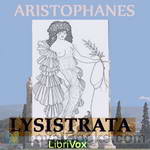 Lysistrata
Lysistrata
Lysistrata read by the Classics Drama Company at DePaul. The Classics Drama Company at DePaul is a new gathering of Thespians and Classicists dedicated to performing and understanding ancient literature. If you live in Chicago and attend DePaul University, we welcome new additions to our group. Contact Dr. Kirk Shellko (kshellko@depaul.edu), if interested.First performed in classical Athens c. 411 B.C.E., Aristophanes’ Lysistrata is the original battle of the sexes. One woman, Lysistrata, brings together the women of all Greece, exhorting them to withhold sexual contact from all men in order that they negotiate a treaty... | |
By: Gilbert Parker (1862-1932) | |
|---|---|
 Seats of The Mighty
Seats of The Mighty
| |
By: Langdon Mitchell (1862-1935) | |
|---|---|
 The New York Idea
The New York Idea
I find it very hard to classify "The New York Idea" under any of the established rubrics. It is rather too extravagant to rank as a comedy; it is much too serious in its purport, too searching in its character-delineation and too thoughtful in its wit, to be treated as a mere farce. Its title—not, perhaps, a very happy one—is explained in this saying of one of the characters: "Marry for whim and leave the rest to the divorce court—that's the New York idea of marriage." Like all the plays,... | |
By: Jean Racine (1639-1699) | |
|---|---|
 Phaedra
Phaedra
In the court of Louis XIV, adaptations of Greek tragedies were very popular. This play, heavily influenced by Euripides' Hippolytus, deals with love that violates social taboos. Note: In Racine's work, a new "scene" begins whenever a character enters or exits. Therefore, there are no stage directions, only a list of the characters on stage for each scene. The action is continuous for the entire act. | |
By: William Congreve (1670 -1729) | |
|---|---|
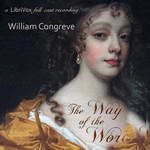 The Way of the World
The Way of the World
The Way of the World is a play written by British playwright William Congreve. It premiered in 1700 in the theatre in Lincoln's Inn Fields in London. It is widely regarded as being one of the best Restoration comedies written and is still performed sporadically to this day.The play is based around the two lovers Mirabell and Millamant (originally famously played by John Verbruggen and Anne Bracegirdle). In order for the two to get married and receive Millamant's full dowry, Mirabell must receive the blessing of Millamant's aunt, Lady Wishfort... | |
By: Eugene O'Neill | |
|---|---|
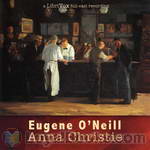 Anna Christie
Anna Christie
Eugene O'Neill's drama Anna Christie was first produced on Broadway in 1921 and received the Pulitzer Prize in 1922. It focuses on three main characters: Chris Christopherson, a Swedish captain of a coal barge and longtime seaman, his daughter Anna, who has grown up separated from her father on a Minnesota farm, and Mat Burke, an Irish stoker who works on steamships. At the beginning of the play Chris and Anna are reunited after fifteen years apart. Anna comes to live on her father's coal barge, but hides the secret of her past from him. When she meets Mat after an accident in the fog, they almost immediately fall in love - but Anna finds that forging a new future will not be easy. | |
By: Frank Wedekind (1864-1918) | |
|---|---|
 Pandora's Box
Pandora's Box
| |
 Earth Spirit
Earth Spirit
Earth Spirit (1895) (Erdgeist) is a play by the German dramatist Frank Wedekind. It forms the first part of his pairing of 'Lulu' plays (the second is Pandora's Box [1904]), both of which depict a society "riven by the demands of lust and greed". Together with Pandora's Box, Wedekind's play formed the basis for the silent film Pandora's Box (1929) starring Louise Brooks and the opera Lulu by Alban Berg in 1935 (premiered posthumously in 1937). The eponymous "earth spirit" of this play is Lulu, who Wedekind described as a woman "created to stir up great disaster... | |
By: George Farquhar (1677-1707) | |
|---|---|
 Recruiting Officer
Recruiting Officer
| |
By: Florence Holbrook (1860-1932) | |
|---|---|
 Dramatic Reader for Lower Grades
Dramatic Reader for Lower Grades
Despite the title's bland sounding name, this book is a charming collection of 16 plays for children. These little plays—well-known stories done into dialogue—were written for children who like to imagine themselves living with their favorite characters in forest, in palace, or in fairyland. Included are Cinderella, Robin Hood, William Tell, Hansel and Gretel and many more. | |
By: Francis Beaumont (1584-1616) | |
|---|---|
 The Maid's Tragedy
The Maid's Tragedy
Beaumont and Fletcher's The Maid's Tragedy (first published 1619) is a sensational Jacobean sex tragedy. When gentleman soldier Melantius returns to Rhodes, he finds his dear friend Amintor is recently married - but not to his troth-plight love Aspatia (the maid of the title). Instead, the King has arranged a match between Amintor and Melantius' sister, the beautiful Evadne. On his wedding night, Amintor finds that his new wife has married him under false pretenses - and this unleashes a torrent of dire consequences, sexual, emotional, and ultimately political. | |
By: David Belasco (1853-1931) | |
|---|---|
 Return of Peter Grimm
Return of Peter Grimm
| |
By: Augusta Stevenson (1869-1976) | |
|---|---|
 Children's Classics in Dramatic Form
Children's Classics in Dramatic Form
| |
By: August von Kotzebue (1761-1819) | |
|---|---|
 Lover's Vows
Lover's Vows
Lovers' Vows (1798), a play by Elizabeth Inchbald arguably best known now for having been featured in Jane Austen's novel Mansfield Park (1814), is one of at least four adaptations of August von Kotzebue's Das Kind der Liebe (1780; literally "Child of Love," or "Natural Son," as it is often translated), all of which were published between 1798 and 1800. Inchbald's version is the only one to have been performed. Dealing as it does with sex outside marriage and illegitimate birth, Inchbald in the Preface to the published version declares herself to have been highly sensitive to the task of adapting the original German text for "an English audience... | |
By: Frances Browne (1816-1879) | |
|---|---|
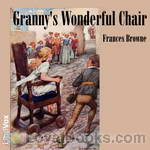 Granny's Wonderful Chair
Granny's Wonderful Chair
Her most famous work, Granny's Wonderful Chair, was published in 1856 and it is still in print to this day. It is a richly imaginative book of fairy stories and has been translated into many languages. This work, read as a child by Frances Hodgson Burnett, inspired the writings of Little Saint Elizabeth and Other Stories | |
By: Jesse Lynch Williams (1871-1929) | |
|---|---|
 Why Marry?
Why Marry?
Why Marry? is a comedy, which "tells the truth about marriage". We find a family in the throes of proving the morality of marriage to a New Age Woman. Can the family defend marriage to this self-supporting girl? Will she be convinced that marriage is the ultimate sacredness of a relationship or will she hold to her perception that marriage is the basis of separating two lovers."Why Marry?" won the first Pulitzer Prize for Drama. | |
By: Alfred Sutro (1863-1933) | |
|---|---|
 Five Little Plays
Five Little Plays
British dramatist Alfred Sutro's collection contains five one act plays: "The Man in the Stalls," "A Marriage Has Been Arranged…", "The Man on the Kerb," "The Open Door," and "The Bracelet." The plays are performed by Amanda Friday, Libby Gohn, Elizabeth Klett, mb, Bob Neufeld, Caprisha Page, Bruce Pirie, and Algy Pug. | |
By: Kenneth McGaffrey (??-1938) | |
|---|---|
 The Sorrows of a Show Girl
The Sorrows of a Show Girl
Originally printed in The Morning Telegraph in New York, this is the story of Miss Sabrina, the show girl, and her ups and downs with the unpredictable theatrical industry and the Great White Way, the lights and glamour of Broadway. "In order to set myself right with both the public and the vast army of Sabrinas that add youth and beauty to our stage, and brilliancy and gaiety to our well known cafes, I wish to say that she is all that she should be...”- Kenneth McGaffrey | |
By: Unknown | |
|---|---|
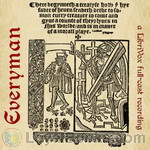 Everyman
Everyman
The Somonyng of Everyman (The Summoning of Everyman), usually referred to simply as Everyman, is a late 15th-century English morality play. Like John Bunyan's novel Pilgrim's Progress, Everyman examines the question of Christian salvation by use of allegorical characters, and what Man must do to attain it. The premise is that the good and evil deeds of one's life will be tallied by God after death, as in a ledger book. The play is the allegorical accounting of the life of Everyman, who represents all mankind... | |
By: William Shakespeare (1564-1616) | |
|---|---|
 Coriolanus
Coriolanus
Shakespeare was passionately interested in the history of Rome, as is evident from plays like Titus Andronicus, Julius Caesar, and Antony and Cleopatra. His tragedy Coriolanus was probably written around 1605-07, and dramatizes the rise and fall of a great Roman general, Caius Martius (later surnamed Coriolanus because of his military victory at Corioli). This play is unusual in that it provides a strong voice for the ordinary citizens of Rome, who begin the play rioting about the high price of food, and who continually clash with Coriolanus because of his contempt for plebians. | |
By: Ben Jonson (1572-1637) | |
|---|---|
 The Alchemist
The Alchemist
An outbreak of plague in London forces a gentleman, Lovewit, to flee temporarily to the country, leaving his house under the sole charge of his butler, Jeremy. Jeremy uses the opportunity given to him to use the house as the headquarters for fraudulent acts. He transforms himself into 'Captain Face', and enlists the aid of Subtle, a fellow conman and Dol Common, a prostitute. In The Alchemist, Jonson unashamedly satirizes the follies, vanities and vices of mankind, most notably greed-induced credulity... | |
By: Various | |
|---|---|
 One-Act Play Collection 003
One-Act Play Collection 003
This collection of ten one-act dramas features plays by Edward Goodman, Alice Gerstenberg, Arnold Bennett, John Galsworthy, Anton Chekhov, Frank Wedekind, Moliere, Theresa Helburn, John Kendrick Bangs, and Harold Brighouse. | |
By: Euripides (480-406 BC) | |
|---|---|
 Medea
Medea
Euripides' tragedy focuses on the disintegration of the relationship between Jason, the hero who captured the Golden Fleece, and Medea, the sorceress who returned with him to Corinth and had two sons with him. As the play opens, Jason plans to marry the daughter of King Creon, and the lovesick Medea plots how to take her revenge. | |
By: Molière | |
|---|---|
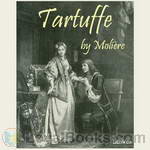 Tartuffe
Tartuffe
Jean-Baptiste Poquelin, known by his stage name Molière, was a French playwright and actor who is considered to be one of the greatest masters of comedy in Western literature. Among Molière's best-known works is Tartuffe or The Hypocrite, written in 1664. Though Tartuffe was received well by the public and even by Louis XIV, its popularity was lessened when the Archbishop of Paris issued an edict threatening excommunication for anyone who watched, performed in, or read the play.Tartuffe, a pious fraud who pretends to speak with divine authority, has insinuated himself into the household of Orgon... | |
By: Upton Sinclair (1878-1968) | |
|---|---|
 The Machine
The Machine
Upton Sinclair is best known for his novel The Jungle, an expose of the meatpacking industry. He was also a playwright whose works for the stage reflected the same progressive viewpoints found in his other writing. In The Machine, published as part of Sinclair's 1912 collection Plays of Protest, Socialist activists show a rich man's daughter the truth about the society in which she has been raised. | |
By: Various | |
|---|---|
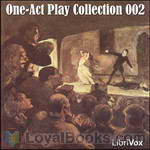 One-Act Play Collection 002
One-Act Play Collection 002
This collection of eight one-act dramas features plays by Eugene O'Neill, George Bernard Shaw, John Galsworthy, Susan Glaspell, William Dean Howells and John Millington Synge. It also includes a dramatic reading of a short story by Frank Richard Stockton. | |
By: Henrik Ibsen (1828-1906) | |
|---|---|
 The Wild Duck
The Wild Duck
The Wild Duck (1884) (original Norwegian title: Vildanden) is by many considered Ibsen's finest work, and it is certainly the most complex. It tells the story of Gregers Werle, a young man who returns to his hometown after an extended exile and is reunited with his boyhood friend Hjalmar Ekdal. Over the course of the play, the many secrets that lie behind the Ekdals' apparently happy home are revealed to Gregers, who insists on pursuing the absolute truth, or the "Summons of the Ideal". Among these truths: Gregers' father impregnated his servant Gina, then married her off to Hjalmar to legitimize the child... | |
By: Eugene O'Neill (1888-1953) | |
|---|---|
 Beyond the Horizon
Beyond the Horizon
Beyond the Horizon is a 1920 play written by American playwright Eugene O'Neill. It was O'Neill's first full-length work, and the winner of the 1920 Pulitzer Prize for Drama. The play focuses on the portrait of a family, and particularly two brothers Andrew and Robert. In the first act of the play, Robert is about to go off to sea with their uncle Dick, a sea captain while Andrew looks forward to marrying his sweetheart Ruth and working on the family farm as he starts a family. | |
By: William Shakespeare (1564-1616) | |
|---|---|
 Pericles, Prince of Tyre
Pericles, Prince of Tyre
Pericles, Prince of Tyre is a Jacobean play written at least in part by William Shakespeare and included in modern editions of his collected works despite questions over its authorship, as it was not included in the First Folio. Modern editors generally agree that Shakespeare is responsible for almost exactly half the play—827 lines—the main portion after scene 9 that follows the story of Pericles and Marina. Modern textual studies indicate that the first two acts of 835 lines detailing the many voyages of Pericles were written by a mediocre collaborator, which strong evidence suggests to have been the victualler, pander, dramatist and pamphleteer George Wilkins. | |
By: John Webster (1580-1634) | |
|---|---|
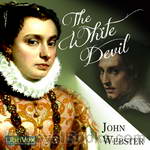 The White Devil
The White Devil
John Webster's The White Devil (1612) is a Jacobean revenge tragedy, replete with adultery, murder, ghosts, and violence. The Duke of Brachiano and Vittoria Corombona decide to kill their spouses, Isabella and Camillo, in order to be together, aided by the crafty and ambitious Flamineo, Vittoria's brother. Their actions prompt vows of revenge from Isabella's brother Francisco, the Duke of Florence, and Count Lodovico, who was secretly in love with her. The title refers to the early modern proverb that "the white devil is worse than the black," indicating the hypocrisy practiced by many of the characters in the play. | |
By: Thomas Middleton and Thomas Dekker | |
|---|---|
 The Roaring Girl
The Roaring Girl
The Roaring Girl is a rip-roaring Jacobean comedy co-written by Thomas Middleton and Thomas Dekker and first published in 1611. The play is a fictionalized dramatization of the life of Mary Frith, known as "Moll Cutpurse", a woman who had gained a reputation as a virago in the early 17th century. (The term "roaring girl" was adapted from the slang term "roaring boy", which was applied to a young man who caroused publicly, brawled, and committed petty crimes.) The play combines the exploits of the cross-dressed Moll with the amorous adventures of a trio of merchants' wives, and the forbidden romance between Sebastian Wengrave and Mary Fitzallard. | |
By: Henrik Ibsen (1828-1906) | |
|---|---|
 Rosmersholm
Rosmersholm
Rosmersholm is a play written in 1886 by Norwegian playwright Henrik Ibsen. In the estimation of many critics the piece is Ibsen’s masterwork, only equalled by The Wild Duck of 1884. As expressed by the protagonist, Rosmer, the theme of the play is social and political change, in which the traditional ruling classes relinquish their right to impose their ideals on the rest of society, but the action is entirely personal, resting on the conduct of the immoral, or amoral, “free thinking” heroine, Rebecca, who sets herself to undermine Rosmer’s religious and political beliefs because of his influential position in the community... | |
By: Unknown | |
|---|---|
 The Drama: A Quarterly Review
The Drama: A Quarterly Review
This is a collection of theatrical essays from the American quarterly The Drama, including six non-fiction works -- 3 profiles: Schnitzler, Andreyev, and O'Neill, and 3 articles: Characterization vs Situation, The Actor in England, & The Evolution of The Actor. | |
By: Arthur Wing Pinero (1855-1934) | |
|---|---|
 The Amazons: A Farcical Romance
The Amazons: A Farcical Romance
This 1895 farce inspired by the outlandish idea of women wearing pants, centers around the predicament of the three daughters of the eccentric Marchioness of Castlejordan, who determined to have sons, raised them like boys. She encouraged them to dress and act like boys at home, yet dress like ladies when out. As the girls come of age, they are conflicted. They want to please mother by acting as her sons, but, suddenly smitten with three gentlemen, they are compelled to grow up and be ladies. When their suitors secretly come to woo, they aren’t sure what to do……and what will mother do if she finds out? | |
By: Charles Dickens (1812-1870) | |
|---|---|
 The Strange Gentleman
The Strange Gentleman
Before he became a novelist, Dickens wrote several successful plays. This one from 1836, his first, he called, "A Comic Burletta in Two Acts". Characters arrive at a village inn called "The St. James Arms" and much confusion ensues. | |
By: Various | |
|---|---|
 One Act Play Collection 004
One Act Play Collection 004
This collection of twelve one-act dramas features plays by James Allen, John Kendrick Bangs, Gordon Bottomley, Charles Dickens, Lord Dunsany, Susan Glaspell, George Bernard Shaw, August Strindberg, Marion Craig Wentworth, and William Butler Yeats. The plays were coordinated by Elizabeth Barr, Margaret Espaillat, Amanda Friday, Elizabeth Klett, Kristingj, David Lawrence, Algy Pug, Todd, and Chuck Williamson. | |
By: Thomas Love Peacock (1785-1866) | |
|---|---|
 Headlong Hall
Headlong Hall
Headlong Hall is the first novel by Thomas Love Peacock, published in 1815 (dated 1816). As in his later novel Crotchet Castle, Peacock assembles a group of eccentrics, each with a single monomaniacal obsession, and derives humor and social satire from their various interactions and conversations. The setting is the country estate of Squire Harry Headlong Ap-Rhaiader, Esq. in Wales. | |
By: William Shakespeare (1564-1616) | |
|---|---|
 Shakespearean Dialogues Collection
Shakespearean Dialogues Collection
This is a collection of scenes from Shakespeare's plays, mainly comprising dialogues between two characters. The theme for this collection is "Wooing, Wedding, and Repenting" (inspired by a line from Much Ado About Nothing). | |
By: Moliere (1622-1673) | |
|---|---|
 The Imaginary Invalid
The Imaginary Invalid
The Imaginary Invalid is a three-act comédie-ballet by the French playwright Molière. It was first performed in 1673 and was the last work he wrote. The plot centers around Argan, the 'imaginary invalid' who is completely dependent on his doctors and wants to marry his daughter to a doctor against her will, so that he will always have medical care freely available to him. In an ironic twist of fate, Molière collapsed during his fourth performance as Argan on 17 February and died soon after. | |
By: Molière (1622-1673) | |
|---|---|
 Miser
Miser
The Miser is a comedy of manners about a rich moneylender named Harpagon. His feisty children long to escape from his penny-pinching household and marry their respective lovers. Although the 17th-century French upper classes presumably objected to the play's message, it is less savage and somewhat less realistic than Molière's earlier play, Tartuffe, which attracted a storm of criticism on its first performance. | |
By: Thomas Middleton (1580-1627) | |
|---|---|
 Women Beware Women
Women Beware Women
Thomas Middleton's masterful 17th century tragedy is packed with adultery, incest, intrigue, revenge, and inventive methods for murder. Leantio elopes with Bianca against her family's wishes and tries to hide her in the house he shares with his widowed mother. Yet the Duke sees Bianca at the window and is powerfully attracted to her, threatening Leantio's security. Livia, a wealthy widow, delights in intrigue, aiding the Duke to satisfy his desires with Bianca, and bringing together her brother Hippolito with her niece Isabella, despite their familial relationship... | |
By: August Strindberg (1849-1912) | |
|---|---|
 The Ghost Sonata
The Ghost Sonata
The Ghost Sonata (Spoksonaten) is a play in three acts by Swedish playwright August Strindberg. Written in 1907, it was first produced at Strindberg's Intimate Theatre in Stockholm on 21 January 1908... The Ghost Sonata is a key text in the development of modernist drama and a vivid example of a chamber play. In it, Strindberg creates a world in which ghosts walk in bright daylight, a beautiful woman is transformed into a mummy and lives in the closet, and the household cook sucks all the nourishment out of the food before she serves it to her masters... | |
By: Frank Wedekind | |
|---|---|
 The Awakening of Spring
The Awakening of Spring
The Awakening of Spring is the German dramatist Frank Wedekind's first major play and a seminal work in the modern history of theatre. It is the source material for the contemporary rock musical Spring Awakening. The play criticises the sexually-oppressive culture of fin de siècle Germany and offers a vivid dramatisation of the erotic fantasies that it breeds. Due to the nature of its content, the play has often been banned. | |
By: Aeschylus (c. 525 BCE - c. 456 BCE) | |
|---|---|
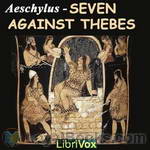 Seven Against Thebes
Seven Against Thebes
In this, the only extant tragedy from Aeschylus' trilogy about the House of Oedipus, Thebes is under siege from Polynices, a former prince of Thebes. After King Oedipus left his city and cursed the princes, Polynices and his brother, Eteocles, decided to rule alternately, switching at the end of every year. However, at the end of his year as king, Eteocles refused to turn power over to his brother and exiled him, fulfilling his father's curse that the two brothers could not rule peacefully. In the action of the play, Polynices and a group of Argive soldiers are attacking Thebes so that he can take his place as ruler... | |
By: Myrtle Reed (1874-1911) | |
|---|---|
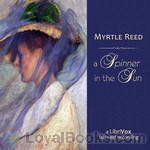 A Spinner in the Sun (dramatic reading)
A Spinner in the Sun (dramatic reading)
Myrtle Reed may always be depended upon to write a story in which poetry, charm, tenderness and humor are combined into a clever and entertaining book. Her characters are delightful and she always displays a quaint humor of expression and a quiet feeling of pathos which give a touch of active realism to all her writings. In "A Spinner in the Sun" she tells an old-fashioned love story, of a veiled lady who lives in solitude and whose features her neighbors have never seen. There is a mystery at the heart of the book that throws over it the glamour of romance. | |
By: Henry Fielding | |
|---|---|
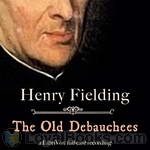 The Old Debauchees
The Old Debauchees
Young Laroon plans to marry Isabel, but Father Martin manipulates Isabel's father, Jourdain, in order to seduce Isabel. However, other characters, including both of the Laroons, try to manipulate Jourdain for their own ends; they accomplish it through disguising themselves as priests and using his guilt to convince him of what they say. As Father Martin pursues Isabel, she is clever enough to realize what is happening and plans her own trap. After catching him and exposing his lust, Father Martin is set to be punished. | |
By: Euripides (484 BC - 406 BC) | |
|---|---|
 Orestes
Orestes
In accordance with the advice of the god Apollo, Orestes has killed his mother Clytemnestra to avenge the death of his father Agamemnon at her hands. Despite Apollo’s earlier prophecy, Orestes finds himself tormented by Erinyes or Furies to the blood guilt stemming from his matricide. The only person capable of calming Orestes down from his madness is his sister Electra. To complicate matters further, a leading political faction of Argos wants to put Orestes to death for the murder. Orestes’ only hope to save his life lies in his uncle Menelaus, who has returned with Helen after spending ten years in Troy and several more years amassing wealth in Egypt... | |
By: Stanley Houghton (1881-1913) | |
|---|---|
 Hindle Wakes (with accompanying essay)
Hindle Wakes (with accompanying essay)
Alan Jeffcote, son of Nat Hawthorn, Hindle's richest factory owner, meets Fanny Hawthorn, daughter of Nat's 'slasher' and oldest friend, in Blackpool and the two go off for what they believe to be secret fling in Llandudno. But after the death of Fanny's friend, Mary, in a pleasure boat accident at Blackpool the secret is revealed and the the two families are thrown into disarray. The leading light of the so-called Manchester School of realist dramatists, Stanley Houghton wrote Hindle Wakes in 1911 and it was a hit both in Mrs... | |
By: John Fletcher (1579-1625) | |
|---|---|
 The Woman's Prize, or The Tamer Tamed
The Woman's Prize, or The Tamer Tamed
John Fletcher's comedy (probably written and performed around 1611) is a sequel to Shakespeare's The Taming of the Shrew, in which, as the title suggests, the tamer will be tamed. Petruchio, the shrew-tamer, has been widowed, and marries a second wife, Maria, a "chaste witty lady." At the instigation of her cousin Bianca, and with the fellowship of her sister Livia, Maria decides to go on strike for equal rights, refusing to behave as a proper 17th century wife. Fletcher's play addresses the issue of men and women's roles within marriage, a controversial issue for his day. | |
By: Aeschylus (c. 525/524-456/455 BC) | |
|---|---|
 Prometheus Bound (Buckley Translation)
Prometheus Bound (Buckley Translation)
"Prometheus Bound" is the only complete tragedy of the Prometheia trilogy, traditionally assumed to be the work of Aeschylus. Jupiter has turned against Prometheus for protecting mankind and has ordered him to be chained to a rock. But Prometheus is comforted by his knowledge of a way to bring about the downfall of Jupiter. | |
By: Aristophanes (446-389 BCE) | |
|---|---|
 Frogs
Frogs
Athens is in a sorry state of affairs. The great tragedian, Euripides, is dead, and Dionysus, the god of the theater, has to listen to third-rate poetry. So, he determines to pack his belongings onto his trusty slave, Xanthias, and journey to the underworld to bring back Euripides! Hi-jinks ensue. | |
By: Nahum Tate (1652-1715) | |
|---|---|
 The History of King Lear
The History of King Lear
The History of King Lear is an adaptation by Nahum Tate of William Shakespeare's King Lear. It first appeared in 1681, some seventy-five years after Shakespeare's version, and is believed to have replaced Shakespeare's version on the English stage in whole or in part until 1838. Unlike Shakespeare's tragedy, Tate's play has a happy ending, with Lear regaining his throne, Cordelia marrying Edgar, and Edgar joyfully declaring that "truth and virtue shall at last succeed." Regarded as a tragicomedy, the play has five acts, as does Shakespeare's, although the number of scenes is different, and the text is about eight hundred lines shorter than Shakespeare's... | |
By: Gordon Bottomley (1874-1948) | |
|---|---|
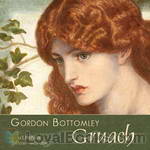 Gruach
Gruach
Gordon Bottomley's verse drama in two scenes is a prequel to Shakespeare's Macbeth. He provides Lady Macbeth with a name - Gruach - and imagines her family life and how she meets Macbeth. | |
By: William Shakespeare (1554-1616) | |
|---|---|
 Two Noble Kinsmen
Two Noble Kinsmen
The Two Noble Kinsmen is a Jacobean tragicomedy co-written by William Shakespeare and John Fletcher, first published in 1634. Set in ancient Greece during a war between Athens and Thebes, the narrative follows the title characters, Palamon and Arcite, noble youths whose friendship is destroyed by their mutual love for the beautiful Emilia. The subplot deals with the love and eventual madness of the Gaoler's Daughter, who falls hopelessly in love with Palamon. The play is based on "The Knight's Tale" by Chaucer, but also has echoes of Shakespeare's A Midsummer Night's Dream, as two of the major characters are Theseus and Hippolyta, who also appear in the earlier play. | |
 Reign of King Edward the Third
Reign of King Edward the Third
| |
By: George Calderon (1868-1915) | |
|---|---|
 Cinderella
Cinderella
If you are expecting glass slippers and pumpkin coaches, look elsewhere... This is "a pantomime as Ibsen would have written it, if only it had occurred to him to write one." Set on a "bleak and cheerless heath overlooking the fjord" we meet Ibsenesque heroine Mrs. Inquest, her step-daughter Hilda, and her daughter Hedda, who is engaged to be married to the unfortunate Tesman. Thus begins Calderon's hilarious Ibsenesque version of Cinderella. NOTE from the editor of the volume, published in 1922 after Calderon's death: This play is hardly more than a rough draft, written when the idea was fresh and put aside to be worked on when the right moment should come... | |
By: Henrik Ibsen (1828-1906) | |
|---|---|
 Peer Gynt
Peer Gynt
Peer is a dreamer, liar, excellent storyteller and an irresponsible person who avoids all problems. He uses and discards women and looks towards the grandiose, the unattainable. Despite of this, one can't help but like and feel sorry for Peer, as it is easy to recognize something of yourself in him. Peer Gynt is the most well known Norwegian play throughout history and is based loosely on the folklore about Per Gynt. It is a dramatic poem in five acts, and has been aptly described as the story of a life based on procrastination and avoidance. The play is said to be a confrontation with the flock mentality Ibsen meant to recognize the typical Norwegian. | |
By: Johann Wolfgang von Goethe (1749-1832) | |
|---|---|
 Faust II
Faust II
Faust is the protagonist of a classic German legend; a highly successful scholar, but also dissatisfied with his life, and so makes a deal with the devil, exchanging his soul for unlimited knowledge and worldly pleasures. Johann Wolfgang von Goethe's Faust is a tragic play in two parts. It is Goethe's most famous work and considered by many to be one of the greatest works of German literature. Rich in classical allusion, in Part Two the romantic story of the first Faust is forgotten, and Faust wakes in a field of fairies to initiate a new cycle of adventures and purpose... | |
By: Allan Monkhouse (1858-1936) | |
|---|---|
 Mary Broome
Mary Broome
Before Downton Abbey, there was Mary Broome. In Allan Monkhouse's 1911 satire, when the son of a middle-class household gets their housemaid pregnant, the two families must try to combine their very different values. | |
By: William Shakespeare (1554-1616) | |
|---|---|
 As You Like It (version 2)
As You Like It (version 2)
Shakespeare's pastoral comedy was written and first performed around 1599, and presents some of his familiar motifs: a cross-dressing heroine, a wise-cracking fool, brothers usurping their brothers' power, a journey from the court to the country, and various romantic entanglements. | |
By: George Bernard Shaw (1856-1950) | |
|---|---|
 Widowers' Houses
Widowers' Houses
This is one of three plays Shaw published as Plays Unpleasant in 1898; they were termed "unpleasant" because they were intended, not to entertain their audiences—as traditional Victorian theatre was expected to—but to raise awareness of social problems and to censure exploitation of the laboring class by the unproductive rich. In this play, Dr. Harry Trench becomes disillusioned when he discovers how his fiancee's father, Mr. Sartorius, makes his money. However, it is soon revealed that Trench's own income is far from untainted. | |
By: John Millington Synge (1871-1909) | |
|---|---|
 Tinker's Wedding
Tinker's Wedding
The Tinker's Wedding is a two-act play written by Irish playwright J. M. Synge. The author's only comedy, it is set on a roadside near a chapel in rural Ireland. | |
By: August Strindberg (1849-1912) | |
|---|---|
 Dance of Death
Dance of Death
The Dance of Death is a play in two parts by the Swedish dramatist August Strindberg, written in 1900. It depicts the dissolution of a marriage between Edgar, an artillery captain, and Alice, a former actress. Increasingly isolated in their fort-like house, they manipulate and bait each other, until the unexpected arrival of Curt, Alice's cousin. His presence creates a tense triangular relationship that escalates throughout Part One, and is complicated with the introduction of two of the trio's children, Allan and Judith, in Part Two. | |
By: W. S. Gilbert (1836-1911) | |
|---|---|
 Sweethearts
Sweethearts
Sweethearts is a comic play billed as a "dramatic contrast" in two acts by W. S. Gilbert. The play tells a sentimental and ironic story of the differing recollections of a man and a woman about their last meeting together before being separated and reunited after 30 years. | |
By: Elizabeth Cary (1585-1639) | |
|---|---|
 Tragedy of Mariam
Tragedy of Mariam
The Tragedy of Mariam (1613) is the first original drama written in English by a woman. Elizabeth Cary drew on Jewish histories by Josephus to create a closet drama (written to be read, rather than performed live) about Mariam, the second wife of Herod the Great. At the beginning of the play, Mariam believes that Herod has been killed by Octavius, and struggles with how to respond. On the one hand, she is relieved, as she is angry with Herod for killing her brother and grandfather. On the other, she knows that he loved her, and she feels caught by her sense of duty as his wife. When Herod unexpectedly returns, Mariam must decide what to do. | |
By: Edmund John Eyre (1767-1816) | |
|---|---|
 Lady of the Lake
Lady of the Lake
At the request of Mr. Siddons, Manager and Patentee of the Theatre Royal, Edinburgh, the following Performance was composed. I am very sensible that Mr. Scott’s Poem of “The Lady of the Lake” afforded material for a much superior Drama than the one here presented to the public; but as Mr. Siddons, in all his correspondence with me on the subject, urged expedition, I was more attentive to the interest of a Friend than to the fame of an Author; and the whole piece was arranged, written, and copied in the short space of ten days... | |
By: Various | |
|---|---|
 Benjamin Britten: Source Stories of Twelve Operas
Benjamin Britten: Source Stories of Twelve Operas
Britten's operas are firmly established in the international repertoire: according to Operabase, they are performed worldwide more than those of any other composer born in the 20th century, and only Puccini and Richard Strauss come ahead of him if the list is extended to all operas composed after 1900. Britten went to various sources for his stories from the Bible to Japanese noh plays. This is a collection of twelve of the source stories. All but one are the original texts; the one exception is A Midsummer Night’s Dream which the reader took from Charles Lamb’s telling of the story. Some operas are omitted because no public domain texts could be found for their sources. | |
By: Rachel Crothers (1878-1958) | |
|---|---|
 Man's World
Man's World
The mysterious Frank Ware is a woman writer forced to write under a masculine pseudonym in order to win literary respect. Adding to her enigmatic status is the fact that she lives in New York City with her adopted child, a little son of unknown parentage, mystifying her friends by spending all her spare time in the least savory parts of the City, trying to rescue prostitutes from their hard lives. Eventually, even her closest bohemian and artistic companions begin to ask awkward questions, driving her to difficult, life-changing revelations... | |
By: Various | |
|---|---|
 One-Act Play Collection 005
One-Act Play Collection 005
This collection of ten one-act dramas features plays by James M. Barrie, Hereward Carrington, Marjorie Benton Cooke, Alice Gerstenberg, Susan Glaspell and George Cram Cook, St. John Hankin, George Middleton, David Pinski, Frederik Pohl, and an unknown Japanese author. The plays were coordinated by Arielle Lipshaw, Availle, Chuck Williamson, Todd, Peter Yearsley, Caprisha Page, Charlotte Duckett, and Amanda Friday. | |
By: John Ford (1586-1639) | |
|---|---|
 'Tis Pity She's a Whore
'Tis Pity She's a Whore
One of the most shocking plays produced in England during the reign of Charles I, 'Tis Pity She's A Whore chronicles the disastrous results of an incestuous affair between fatalistic Italian siblings, Giovanni and Annabella. As suitors vie for Annabella's hand, various webs of deception and revenge intertwine, culminating in a bloody finale. CAST LISTBonaventura, a Friar/ Bergetto, Nephew to Donado: alanmapstoneA Cardinal, Nuncio to the Pope AND Banditti: Algy PugSoranzo, a Nobleman: tovarischFlorio,... | |
By: Leonid Nikolayevich Andreyev (1871-1919) | |
|---|---|
 Satan's Diary
Satan's Diary
"Satan's Diary", Andreyev's last work, was completed by the great Russian a few days before he died in Finland, in September, 1919. But a few years ago the most popular and successful of Russian writers, Andreyev died almost penniless, a sad, tragic figure, disillusioned, broken-hearted over the tragedy of Russia. In "Satan's Diary", Andreyev summoned up his boundless disillusionment in an absorbing satire on human life. Fearlessly and mercilessly he hurled the falsehoods and hypocrisies in the face of life... | |
By: Various | |
|---|---|
 One-Act Play Collection 006
One-Act Play Collection 006
This collection includes ten one-act plays by David Belasco, Arnold Bennett, Hereward Carrington, Lewis Carroll, Lord Dunsany, John Galsworthy, Charlotte Perkins Gilman, Maurice Maeterlinck, Anna Bird Stewart, and Alfred, Lord Tennyson. The Book Coordinators for this collection were Charlotte Duckett, Michele Eaton, Elizabeth Klett, Loveday, Piotr Nater, Algy Pug, Eden Rea-Hedrick, Todd, and Chuck Williamson. | |
By: Edward Sheldon (1886-1946) | |
|---|---|
 Boss
Boss
The Boss centers on the relationship between Michael Regan, an Irish-American businessman, and Emily Griswold, an outspoken American girl bent on saving her father's business. Set during a time when unions fought for wages and bosses fought for more stake in their company, the play's relevance strikes at the heart of economic issues and hardships in modern day America. | |
By: Various | |
|---|---|
 One-Act Play Collection 007
One-Act Play Collection 007
One-Act Play Collection 007 includes one-act plays in the public domain read by a variety of LibriVox members. | |
By: James Joyce (1882-1941) | |
|---|---|
 Exiles
Exiles
Exiles is a play by James Joyce, who is principally remembered for his novels. It was rejected by W. B. Yeats for production by the Abbey Theatre. Its first major London performance was in 1970, when Harold Pinter directed it at the Mermaid Theatre. The basic premise of Exiles involves a love triangle between Richard Rowan (a Dublin writer recently returned from exile in Rome), Bertha (his common law wife) and his old friend Robert Hand (a journalist). (There are obvious parallels to be drawn with... | |
By: Various | |
|---|---|
 One-Act Play Collection 008
One-Act Play Collection 008
One-Act Play Collection 008 includes one-act plays in the public domain read by a variety of LibriVox members.Project BC: Michele Eaton | |
By: Jessie Braham White (1870-1937) | |
|---|---|
 Snow White and the Seven Dwarfs
Snow White and the Seven Dwarfs
The classic story of Snow White and the seven dwarfs, now in play form! The play was adapted by Jessie Braham White (the pen name of Winthrop Ames), from the Grimm tale. | |
By: Charles Macklin (1699-1797) | |
|---|---|
 Will and No Will or a Bone for the Lawyers
Will and No Will or a Bone for the Lawyers
This "Afterpiece" - a short play to follow a main production - was first produced in 1746. It was based on Regnard's five-act comedy le Legetaire Universel (1707), which is itself a composite of Italian comedy with echoes of Molière, moving from scene to scene with little effort at logical consistency or structure but treating each scene autonomously for its own comic value. The rather long Prologue to A WILL AND NO WILL (11 pages of manuscript) makes fun of the convention of the eighteenth century prologues by the familiar dodge of having actors chatting as though they were in the Pit waiting for the actors in the preceding main play to dress for the afterpiece. | |
By: Amice MacDonell | |
|---|---|
 Robin Hood (Dramatic Reading)
Robin Hood (Dramatic Reading)
One May Day, Robin Hood and his Merry Men sit in Sherwood Forest, waiting for a traveller to share their dinner. Enter a distraught Knight with his fair daughter Marian, who owe money to the Sheriff of Nottingham, and have not the means by which to pay it. Meanwhile the greedy Sheriff is visited by the Baron of the Black Castle, who plots to silence the famous outlaw once and for all! This version of the Robin Hood legend was written, and now recorded, as a play, entertaining for children and adults alike... | |
By: Jules Eckert Goodman (1876-1962) | |
|---|---|
 Treasure Island: A Play in 4 Acts
Treasure Island: A Play in 4 Acts
Arrgh and Shiver Me Timbers! Jim Hawkins and Long John Silver! This is Robert Louis Stevenson's classic tale as made into a play for The Punch and Judy Theatre Company in 1915. - Summary by ToddHW Cast list: Jim Hawkins: Rachel Mrs Hawkins: Jennifer Fournier Dr Livesey: Kristin Gjerløw Squire Trelawney: ToddHW Captain Smollett : Maria Kasper Hunter: David Lawrence Joyce: Elizabeth Travers Gray: Andrew Travers Bill Bones The Captain: Beth Thomas Black Dog: MaryAnnS Pew: Ray Kasper Long John Silver: Adele de Pignerolles Captain Flint : Beth Thomas Morgan: Esther ben Simonides Anderson: Aaron M... | |
By: Various | |
|---|---|
 Nō Plays of Japan
Nō Plays of Japan
Noh , or Nogaku—derived from the Sino-Japanese word for "skill" or "talent"—is a major form of classical Japanese musical drama that has been performed since the 14th century. Developed by Kan'ami and his son Zeami, it is the oldest major theatre art still regularly performed today. Traditionally, a Noh program includes five Noh plays with comedic kyōgen plays in between, even though an abbreviated program of two Noh plays and one kyōgen piece has become common in Noh presentations today. An okina play may be presented in the very beginning, especially during New Year celebrations, holidays, and other special occasions... | |
By: William Shakespeare (1564-1616) | |
|---|---|
 Favourite Scenes From Shakespeare
Favourite Scenes From Shakespeare
In 2012, the World Shakespeare Festival surveyed Britons as to their favourite plays by Shakespeare. This collection consists of 21 scenes from the most popular plays written by arguably the greatest writer in the English language, possibly any language. It is an homage to the Bard in celebration of the 400th anniversary of his death in 1616 -- the Shakespeare Quadricentennial. - Summary by John Burlinson Roles performed by: Beth Thomas, Michele Eaton, Sonia, Tony Addison and John Burlinson Editing done mainly by Michele Eaton and John Burlinson | |
By: Catherine Chisholm Cushing (1874-1952) | |
|---|---|
 Pollyanna, the Glad Girl: A Four-Act Comedy
Pollyanna, the Glad Girl: A Four-Act Comedy
Miss Polly Harrington is not at all pleased to be taking charge of her orphaned niece - but duty is duty, and that's how Pollyanna Whittier ended up in New England. Cheerful and ever-optimistic, Pollyanna sets out to infect the whole town with her "Glad" game, getting into some trouble along the way! How will strict Miss Polly react to the orphaned cat, dog, and, worst of all, BOY Pollyanna offers as a gift? What will happen when Pollyanna sets out to break into the fairy-tale castle next door and... | |
By: Various | |
|---|---|
 One-Act Play Collection 009
One-Act Play Collection 009
Ninth volume of one-act plays in the public domain read by a variety of members. A Dramatic Evening Narrator: April6090 Mr Thaddeus Perkins: Jeff Moon Mr Edward Bradley: Tomas Peter Mr Robert Yardsley: Tom Penn John Barlow: Mike Harris Mrs Thaddeus Perkins: TriciaG Mrs Edward Bradley: Sonia Jennie: Leanne Yau The Fatal Message Narrator: Linette Geisel Mr Thaddeus Perkins: Jeff Moon Mr Edward Bradley: Tomas Peter Mr Robert Yardsley: Tom Penn John Barlow: Mike... | |
By: Percy MacKaye (1875-1956) | |
|---|---|
 Caliban by the Yellow Sands
Caliban by the Yellow Sands
Caliban, the primitive, savage son of the witch Sycorax and the evil frog-tiger god Setebos, seeks to obtain knowledge and become civilized from a strange magician named Prospero and his young daughter, Miranda. Through fantastic visions , poetry, song and dance, thus begins the slow, gradual education of a inquisitive brute as he faces enlightenment and wicked temptation. Serving as a thematic companion piece and maybe spiritual prequel and midquel to William Shakespeare's The Tempest, Caliban by the Yellow Sands was a massive, elaborate and outdoor "community masque" performed from 1916-1917 in New York and Boston as part of the three-hundredth anniversary of Shakespeare's death... | |
By: William Shakespeare (1564-1616) | |
|---|---|
 Shakespeare Monologues Collection vol. 13
Shakespeare Monologues Collection vol. 13
This is the thirteenth collection of monologues from Shakespeare's plays. Our readers have chosen their favourite monologues from Shakespeare's famous comedies, tragedies, and histories, covering a wide range of topics, and emotions. - Summary by Carolin | |
By: Amice MacDonell | |
|---|---|
 Story of the Armada
Story of the Armada
It's the summer of 1588, and all is not well in England. Citizens are plotting to betray their queen for Spanish gold, and the dreaded Armada is coming closer and closer. It's up to Lord Burleigh and brave Sir Francis Drake to stop them, but will they succeed in convincing Queen Elizabeth that such action is necessary? And when the Spanish ships finally arrive, what will happen to the queen and the citizens of London? Cast List:William Cecil, Lord Burleigh: Tomas Peter Sir Walter Raleigh: Todd Sir Francis Drake: K... | |
By: Horace Baker Browne (1874-1964) | |
|---|---|
 Short Plays from Dickens
Short Plays from Dickens
Here is a collection of 20 short plays drawn from various books by Charles Dickens such as Nicholas Nickleby, David Copperfield, Bleak House, and Our Mutual Friend. "For the use of Amateur and School Dramatic Societies" - Summary by ToddHW Cast list: Introduction: ToddHW Mrs Tibbs Boarding House - From Sketches by Boz Mrs Tibbs - A boarding-house keeper: Availle Mr Tibbs - Her husband: Tim Watkins Mrs Maplesone - Boarder at Mrs. Tibbs': TriciaG Miss Matilda Maplesone - Boarder at Mrs. Tibbs': Rachel Miss Julia Maplesone - Boarder at Mrs... | |
By: George Farquhar (1677-1707) | |
|---|---|
 Sir Harry Wildair
Sir Harry Wildair
This sequel to the Jubilee [The Constant Couple, or A Trip to the Jubilee] appeared at Drury Lane in 1701, and was almost as popular as its predecessor. The smartness of the dialogue, the witty comment upon the fashions of the hour, the movement of the story, the vice and flippancy exhibited by its chief character, all specially appealed to the audience before whom it was produced, and the comedy had a run of several nights. - Cast list: Sir Harry Wildair: Peter Tucker Banter, Beau, a younger... | |
By: J. M. Barrie (1860-1937) | |
|---|---|
 Kiss for Cinderella
Kiss for Cinderella
This play does have Cinderella and a Godmother, Royalty, and glass slippers, but it takes place in WW1 and is certainly not your typical fairy tale! Produced on Broadway in 1916, it was made into a silent movie in 1925. - Summary by ToddHW Cast list : Mr. Bodie: Peter Yearsley Policeman: ToddHW Cinderella: VivianWeaver Gentleman: Mike Harris Mrs. Maloney: Michele Eaton Marion: Amy Deuchler Man: Tomas Peter Marie-Therese: April6090 Gladys: Leanne Yau Delphine: Lydia Godmother: Beth Thomas Lord Mayor:... | |
By: Arthur Wing Pinero (1855-1934) | |
|---|---|
 Magistrate
Magistrate
The success of “The Magistrate” was immediate, and the Court Theatre was crowded night after night for more than a year, the play being presented over 300 times. So prosperous was the run that there was no cessation during the Summer holiday season. This success, however, was not confined to London, for three companies were soon carrying the play triumphantly over the English provinces, while in September 1885 Mr. Pinero went to New York to produce his work. How can you resist a comedy whose... | |
By: Amice MacDonell | |
|---|---|
 Enterprise of the ''Mayflower''
Enterprise of the ''Mayflower''
"Welcome to all! We show the story of how, nearly three hundred years ago, when this country was not so happy as it is now, some people driven by persecution out of England went on a long and dangerous voyage in a ship called the Mayflower, and made for themselves a home across the Atlantic Ocean." Cast List: Stage Directions read by MaryAnnMaster William Brewster: SpiderScientistMaster William Bradford: ToddHWMaster John Carver: aravagarwalMaster John Alden: JamesMcAndrewMaster John Robinson: Alex... | |
By: Alexandre Dumas (1802-1870) | |
|---|---|
 Paul Jones
Paul Jones
Dumas's play talks of American Naval Hero John Paul Jones's romantic entanglements and affairs of honor ashore in France. He later converted it to a novel. - Summary by ToddHW Cast list: The Marquis D'Auray: Amy Gramour The Marchioness, his wife: Sonia Count Emanuel, their child: Tomas Peter Margaret, their child: Leanne Yau Baron De Lectoure: Nemo Paul Jones: ToddHW Louis Achard: Thomas A. Copeland Mr. De La Jarry: Roger Melin Mr. De Nozay: RecordingPerson Notary: Zames Curran Laffeuille, valet to the Marchioness: Son of the Exiles Jasmin, valet to Emanuel: Eva Davis Stage Directions: Sandra Schmit Edited by: ToddHW | |
By: Arthur Wing Pinero (1855-1934) | |
|---|---|
 Schoolmistress
Schoolmistress
The second of Pinero's farces, following the wildly successful The Magistrate, and likewise a hit. The Schoolmistress has a secret: "Think of the deception I am practising upon dear Vere! Think of the people who believe in the rigid austerity of Caroline Dyott, Principal of Volumnia College. Think of the precious confidence reposed in me by the parents and relations of twenty-seven innocent pupils. Give an average of eight and a half relations to each pupil; multiply eight and a half by twenty-seven and you approximate the number whose trust I betray this night!" The three acts are subtitled 1 - The Mystery, 2 - The Party, and 3 - The Nightmare... | |
By: Molière (1622-1673) | |
|---|---|
 School for Husbands
School for Husbands
In 1661 and 1662 Moliere presented the plays The School for Husbands and then The School for Wives. "The central situations of the two have much in common: the arbitrary and jealous lover to whom circumstances have given almost the authority of a husband: the simple ward rescued from physical constraint by the unfettered cunning of love." In between writing the two plays he got married. Listen to both and see if this comedic genius of the farce changed his attitude. - Summary by ToddHW and The Translator Cast... | |
 School for Wives
School for Wives
In 1661 and 1662 Moliere presented the plays The School for Husbands and then The School for Wives . "The central situations of the two have much in common: the arbitrary and jealous lover to whom circumstances have given almost the authority of a husband: the simple ward rescued from physical constraint by the unfettered cunning of love." In between writing the two plays Moliere got married. Listen to both and see if this comedic genius of the farce changed his attitude. - Summary by ToddHW and... | |